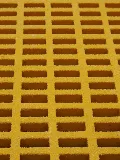loading...
- No. 9, Xingyuan South Street, Dongwaihuan Road, Zaoqiang County, Hengshui, Hebei, China
- admin@zjcomposites.com
- +86 15097380338
- Welcome to visit our website!
frp roof deck
Understanding FRP Roof Decks Advantages and Applications
In the realm of construction and architectural design, the materials chosen for roofing systems play a critical role in the longevity, durability, and overall performance of a building. Among the innovative materials emerging in recent years is Fiber-Reinforced Polymer (FRP), which is making its mark, particularly in roof deck applications. This article aims to explore FRP roof decks, their advantages, and where they find applications.
What is FRP?
Fiber-Reinforced Polymer is a composite material made from a polymer matrix reinforced with fibers. These fibers can be made from various materials, including glass, carbon, or aramid, which significantly enhance the mechanical properties of the polymer. The result is a lightweight, strong, and durable material that outperforms traditional roofing materials in several aspects.
Advantages of FRP Roof Decks
1. Lightweight One of the significant advantages of FRP roof decks is their lightweight nature. Compared to traditional materials like concrete or steel, FRP decks reduce the overall weight of the building structure. This characteristic can lead to savings in foundation costs and enable easier handling and installation.
2. Corrosion Resistance FRP is inherently resistant to corrosion, making it an excellent choice for buildings located in harsh environments, including coastal areas or regions with high humidity. Traditional materials may deteriorate over time due to rust or decay, but FRP is immune to these issues, ensuring a longer lifespan.
3. Low Maintenance The durability of FRP means that once installed, these roof decks require minimal maintenance. Unlike materials that may need regular inspections, painting, or other upkeep, FRP roofs can be left largely unattended, thus reducing long-term costs.
4. High Strength-to-Weight Ratio FRP offers an impressive strength-to-weight ratio, meaning that it can support substantial loads while remaining lightweight. This characteristic is essential for structures that require efficiency without compromising structural integrity.
5. Insulation Properties FRP materials offer excellent thermal insulation, which can contribute to energy efficiency within a building. Good insulation helps in maintaining indoor temperatures, reducing heating and cooling costs.
frp roof deck

6. Design Flexibility FRP can be molded into various shapes and designs, allowing architects and builders to realize their creative visions. This flexibility facilitates the integration of aesthetic considerations with functional requirements in modern architecture.
Applications of FRP Roof Decks
FRP roof decks have a wide array of applications across different sectors. Due to their unique properties, they are increasingly being adopted in commercial buildings, industrial facilities, and even residential projects. Some specific applications include
- Commercial Roofs In commercial applications, such as shopping centers and office buildings, the lightweight nature and reduced maintenance of FRP make it an attractive alternative.
- Industrial Facilities Factories and warehouses often operate in harsh conditions, and the corrosion resistance of FRP roof decks makes them well-suited for these environments.
- Aquatic Centers The use of FRP is prevalent in the construction of pools and aquatic centers, where humidity and chemical exposure can damage traditional materials over time.
- Bridges and Walkways The strength and durability of FRP make it a viable option for pedestrian walkways and bridges, providing safe and reliable access points.
Conclusion
In conclusion, FRP roof decks represent a significant advancement in building materials, offering numerous advantages over traditional options. Their lightweight, corrosion-resistant, and low-maintenance properties make them suitable for a wide range of applications, reflecting their growing popularity in contemporary construction. As technology continues to evolve, it is likely that we will see even more innovative uses for FRP in the roofing sector, paving the way for more sustainable and efficient building practices in the future.
-
The Rise of FRP Profiles: Strong, Lightweight, and Built to LastNewsJul.14,2025
-
SMC Panel Tanks: A Modern Water Storage Solution for All EnvironmentsNewsJul.14,2025
-
GRP Grating: A Modern Solution for Safe and Durable Access SystemsNewsJul.14,2025
-
Galvanized Steel Water Tanks: Durable, Reliable, and Ready for UseNewsJul.14,2025
-
FRP Mini Mesh Grating: The Safer, Smarter Flooring SolutionNewsJul.14,2025
-
Exploring FRP Vessels: Durable Solutions for Modern Fluid HandlingNewsJul.14,2025
-
GRP Structures: The Future of Lightweight, High-Performance EngineeringNewsJun.20,2025
